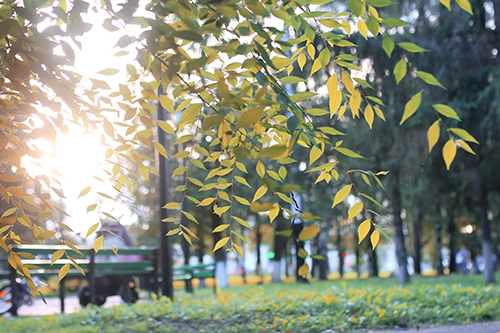6 Tips for Keeping Cool This Summer

Due to climate change and rapid urbanisation, our summers are getting hotter. Researchers at Western Sydney University say that extreme heat occurrences are becoming a major liveability issue, particularly in western Sydney. Extreme heat days over 35 degrees are projected to increase five-fold in western Sydney, from 11 days per year to up to a staggering 52 days per year by 2090, with some areas like Richmond expected to reach up to 67 extreme heat days per year. Already, the average number of days over 35°C is up to 5 times greater compared to the eastern suburbs.
As Sydney is bracing for another record breaking summer, research led by Dr Abby Mellick Lopes, Senior Lecturer in Design and researcher at the Institute for Culture and Society, shows that extreme heat divides people from the environment and from each other.
Dr Mellick Lopes says that in response to rising temperatures, western Sydney residents are using techniques, both individually and communally, to keep cool.
“In our study on how people experience summer heat and manage their comfort, we found people are coping by limiting their physical activity and staying indoors,” she says.
She says that it’s important for urban design and public policy to address this issue by listening to the voices of the community.
“People have strong aspirations for what they would like to see as cool shared spaces in their environments. These aspirations are linked to the provision of basic cooling elements such as shade, shelter and free drinking water, coupled with paths and walkways and improved access to water play, parks and pools for children.”
Dr Louise Crabtree, Senior Research Fellow at the Institute for Culture and Society says that it’s important for communities to come together in extreme heat events.
“People tend to isolate themselves indoors to escape from the heat, but we should be checking on each other and making use of the public facilities available to us as well,” she says.
The researchers share their top six tips for staying cool as the temperatures rise:
1. When air conditioning becomes a ‘default setting’ for cooling, we become disconnected from our environment. Give yourself a chance to acclimatise to summer conditions. Whenever it’s cooler outside than in, open up your house or apartment. Look at how you can modify your home to get rid of heat overnight – a fly screen and lockable sash windows will help.
2. Get up and out early so you can move while the day is young. Take the dog for a walk. Go for a swim. Lake Parramatta is a great spot in Sydney’s West.
3. Find out what’s happening in your area in the evening. Night markets? Community cook outs? Outdoor cinemas? Arrange an evening picnic! We need to learn to use our public areas more during the cool of the evening like many European and South East Asian cultures do!
4. If you have elderly people living alone in your neighbourhood, make a plan to check in with them on hot days. Elderly people living alone are extremely vulnerable to heat stress, particularly if their homes are poorly designed.
5. When you know it’s going to be hot outside, close your windows and curtains to keep it cool inside. Put a wet cloth on your wrists or your ankles, or place your feet in a bucket with cool water.
6. Consider going to public places on a hot day. Libraries have Wi-Fi and there’s a place where you can sit and read.
The Cooling the Commons (opens in a new window)pilot project investigated how western Sydney residents keep cool during the hottest parts of the year and how they would like to see their living environments modified to improve wellbeing in a climate changing world. Researchers were Dr Abby Mellick Lopes, Dr Louise Crabtree, Professor Katherine Gibson from the Institute for Culture and Society (ICS) and Emeritus Professor Helen Armstrong (QUT). That research has led to an ongoing research program with Dr Stephen Healy, Dr Emma Power and Vanicka Arora from ICS and Professor Cameron Tonkinwise (UTS) joining the original team.
The current phase of this research is developing a pattern book that will guide better urban design in western Sydney in partnership with Landcom.
ENDS
17 December 2018




